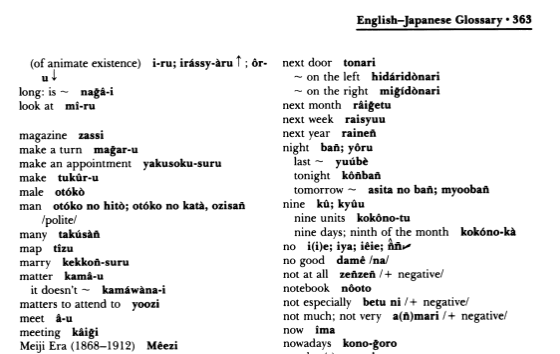and how Pitch Accent will bring your Japanese to a native-sounding level.
This article is about Japanese Pitch Accent.
Most people exercise their eye-strength for recognizing Japanese visually (eye intelligence), let’s work on our ear intelligence!
Just like in other languages, rising intonation on the last syllable indicates a question-statement, as in
“Are you going to the museum?”
The above sentence, if it were spoken in a flat or monotone voice, the ask or the inquiry aspect of the sentence would be lost.
Similarly, in Japanese, we have pitch accent for the great variety of words that share identical spellings. It’s similar to how in English the phrase “I present you with this present” has two different types of stress.
However, unlike English stresses, Japanese Pitch Accent describes a general tendency to rise and fall in melodic pitch over the whole word or phrase.
This video also explains that once pitch has fallen, it does not rise.
Pitch can start Low, then go High, then go Low again.
Or it can start High and go Low.
But once it goes Low (beyond the second or third syllable) the pitch does not go back up unless it’s a question.
Similar to English, questions can having rising intonation on the word, but also Japanese has the special question word (sentence-final particle 終助詞 「か」
Rising and Falling intonation for phrasal segments.
Every segment has an arc, and regarding the amount of drop per segment:
“The more you lower your pitch, the easier it is for the mind to comprehend.”
Thus, starting with rising and proceeding to falling for each comprehensible phrase is recommended, so that listeners may easily follow your stack of concepts.
Japanese Pitch Accent Review Lesson with Listening Quizzes
Pause the video after she repeats each word twice and try and develop an ear to differentiate pitch accents in Japanese.
This video moves quickly and has several 15-minute segments appealing to different aspects of developing Pitch Accent recognition. It’s a video intended for Japanese language learners that can already understand a good deal of conversational Japanese.
Although listening is one way of developing pitch accent understanding, we find that it’s very helpful to “sing” the pitches as they are presented.
By singing along or singing over various beautiful audio samples of Japanese spoken language, one can quickly develop the ability to parrot elegant spoken language.
The above technique develops the ear training and relative-pitch sensitivity.
In order to develop reading sensitivity with regards to pitch accent, we must practice reading out loud pitch accents as they are drawn, and this is most easily accomplished by holding a long tone and singing the whole word, mora by mora (mora are the Japanese rough equivalent of a syllable, one Hiragana glyph).
Japanese consonant-vowel pairs starting with K, G, P, B
か、が、ぱ、ば
will naturally cause a blocking/turning/twisting of air as they are Hard Consonants. When these occur, the pitch is not apparent. Pitch Accent is occuring in the rich landscape provided by the vibratory vowel sounds. Hard consonants effectively “pause” the pitch accent or suspend it for an instant.
Japanese, the spoken language, has its own melody and melodic trends.
Although not many introductory textbooks focus on Pitch Accent, Japanese The Spoken Language from Yale 1987 does actually add accent marks to show rising and falling intonation using classical western accents:

Japanese The Spoken Language: Available on Amazon
Waseda Online Pronunciation Course @ EdX (free)
Waseda (one of Japan’s most prestigious universities) is offering a pronunciation class through EdX. Enrollment is free (unless you want a certificate of completion) and courses start today (October 29, 2019)
https://www.edx.org/course/japanese-pronunciation-for-communication-3
Below we also have a link to a review of the Waseda course.
Next: Read “To Learn Japanese, You Need a Rocketship.”
Wiki on Pitch Accent https://en.wikipedia.org/wiki/Japanese_pitch_accent
Nick Hoyt’s very nice article with nice graphics on Pitch Accent https://japanesetactics.com/japanese-pitch-accent-resources
Review of Waseda’s online course @ Edx for pronunciation practice: https://japaneselevelup.com/waseda-japanese-pronunciation-course-edx-review/
